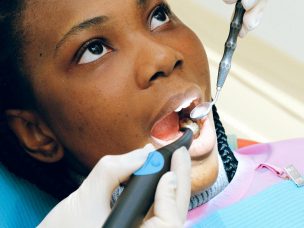The administration of prenatal antibiotics in the 3rd trimester of pregnancy in women over 30 years of age is significantly associated with the onset of AD in the offspring.
Initiating in utero, the human microbiome is integral to the normal metabolic and immune function later in life. Microbial exposure is influenced by antibiotic use, breastfeeding, early life feeding, and the mode of delivery. These factors affect the infant’s gut microbiome. Changes in environmental factors associated with urbanization and dysbiosis contribute to the development of allergic diseases. The earliest manifestation of these diseases is atopic dermatitis (AD). Individuals with AD have different skin and gut microbiomes than those without AD. Prenatal antibiotic use during the 1st, 2nd, and 3rd trimesters of pregnancy is associated with the onset of AD, particularly in maternal atopy.
This prospective study, published in the European Annals of Allergy and Clinical Immunology, aimed to assess the impact of prenatal antibiotic exposure in pregnant women on the incidence of infant AD up to 18 months of age. The study also aimed to investigate the impact of confounding factors related to the infant or mother on the incidence of AD. The study took place in Venizeleion General Hospital, Heraklion, Greece and a total of 231 mothers and 236 infants participated in the study. The mothers were initially interviewed during the first few days after the birth of their offspring. This was followed by a second interview about the AD diagnosis when the babies turned 18 months of age.
Analysis of the interview data revealed that 18.2% (n = 43) of the children were diagnosed with AD at 18 months of age. Of these cases, 20% were moderate and the remaining 80% were mild. A total of 23.81% (n = 55) of the mothers received prenatal antibiotics. Out of 48 mothers who could recall, 33.33% received the antibiotics in the 2nd trimester, and 41.66% received the antibiotics in the 3rd trimester. A total of 56.25% (n = 27) of the mothers who could recall receiving an oral regimen, received a 2nd generation cephalosporin. Concerning the mode of delivery, 50.2% (n = 116) of the babies were born via cesarean section. 79.6% (n = 184) of women breastfed their babies, and 71% of them discontinued after three months. A total of 55.5% (n-131) of the children were given antibiotics when they were re-evaluated and 46.56% of these children received antibiotics more than twice.
These findings suggest a significant association between AD and intravenous prenatal antibiotics, maternal age over 30 years, otitis media episodes, absence of gastroenteritis at 18 months of age, and history of food allergy. The percentage of cesarean sections in the study did not increase the risk of the incidence of AD in offspring.
References
Stefanaki, E., Kalaitzidou, I., Aristou, M., Lakoumentas, J., Galanakis, E., & Xepapadaki, X. (2022). Prenatal antibiotic exposure increases the risk of infant atopic dermatitis. Data from a Greek cohort. European Annals of Allergy and Clinical Immunology. https://doi.org/10.23822/EurAnnACI.1764-1489.266









